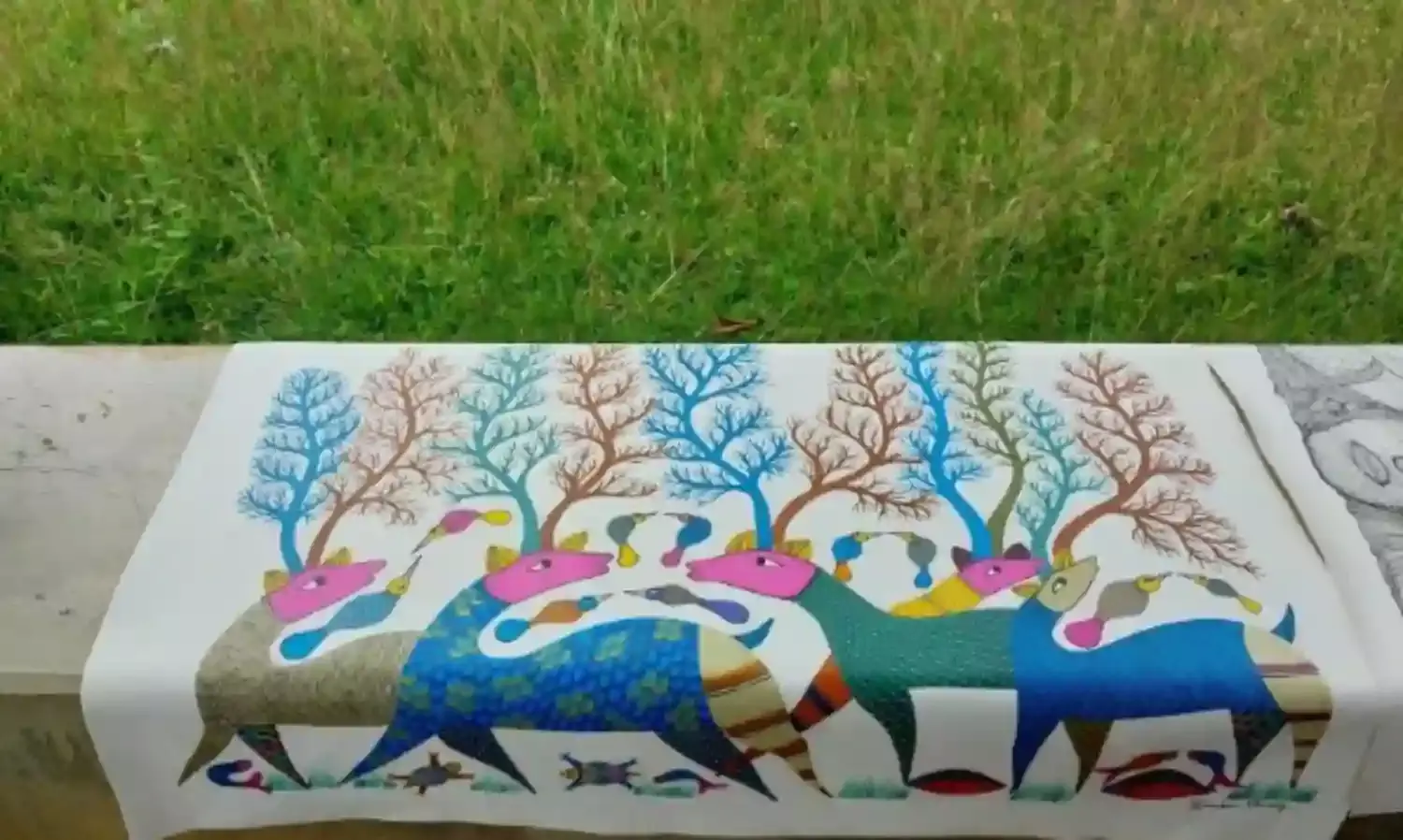‘Displacement of Tribals is Also Impacting Art’
‘If our tradition is lost then future generations will forget many things.’

Rameshwar Dhurwey is young, well-spoken and armed with a college degree. Though his family wanted him to settle down in life with a regular job, he preferred to be a professional Gond artist. He says, “As tribals have reservation in jobs, it is relatively easy to get them, but I wanted to explore my creative side through art.”
A resident of the Baiga-dominated Dindori district in Madhya Pradesh, Dhurwey prefers to paint in acrylic on canvas. His paintings are a burst of colours. He uses light pink and blue to darker shades of maroon, and some of his paintings are black and white with the absence of any other hue.
Some one in ten Indians come from communities known as tribes, also known as Indigenous communities as they are thought to be descended from the first residents (adi-vasi) of the subcontinent. Speakers of the Gondi language form one of the largest such groups in the country. Dhurwey belongs to the Pradhan tribe, a subgroup of the Gond people.
Gond painting once was executed on mud walls. Such murals can still be seen in the Patangarh village of Dindori where the anthropologist Verrier Elwin once travelled to. The Chhattisgarh-based social activist Pramod Potai says there was once a huge craze for the art, but now in the absence of marketing or any definite government policy to encourage the artists, some have distanced themselves from it and are farmers now.
Gond art is inspired by nature and captures it in great detail through the depiction of wildlife and trees. Dhurwey says he was inspired to carry on by a few of his relatives who were Gond painters themselves, and later he took it up to safeguard the tribal culture through the art.
“As tribals worship trees during festivals, they are depicted in Gond art,” he says, diluting his colours with water before painting a tree on a wall at the reporter’s request at the Mukki village inside the Kanha National Park.
One of his paintings made on the occasion of International Tiger Day won a prize. But painting is time consuming, and a medium-sized paining on canvas can take almost 10 hours to finish as there are many details to take care of. The artist, who owns a small shop at the Baiga Haat in Kanha, also paints on paper but says the quality should be good for the paintings to last.
The young artist expects adequate support from the government for the art to flourish in future. “It is a good thing that TRIFED sometimes buys Gond paintings and holds exhibitions of tribal art forms. There are Gond artists who have become popular by selling paintings and attending exhibitions,” he says.
Asked what can bring the art alive on walls, Dhurwey suggests that interior designers could promote it in the cities. Though his house walls in his native village have Gond art on them, he says many people have no idea about it today. The residents of Mukki perhaps saw it for the first time when Dhurwey painted the tree on a blue wall.
Though he has tasted success and attended exhibitions as far as Chennai, he admits that selling his paintings can be a problem. “Gond artists make paintings but face difficulty in finding buyers. There was no exhibition during the Covid-19 period and even now it is a rare thing. We do not possess much technical knowledge but I feel there should be online platforms to promote the art widely. Sometimes, NGOs make small donations which is helpful.”
The artist feels that modern education and the lure of jobs are ensuring that the next generation of tribals lose their hold on culture and tradition. “This can endanger even Gond art. Earlier, tribals took part in many rituals and festivals, but these days due to time constraints many people are moving away from them. If our tradition is lost then future generations will forget many things. The displacement of tribals is also impacting art and culture.”



